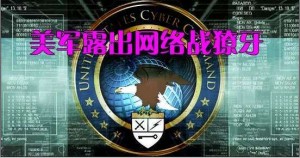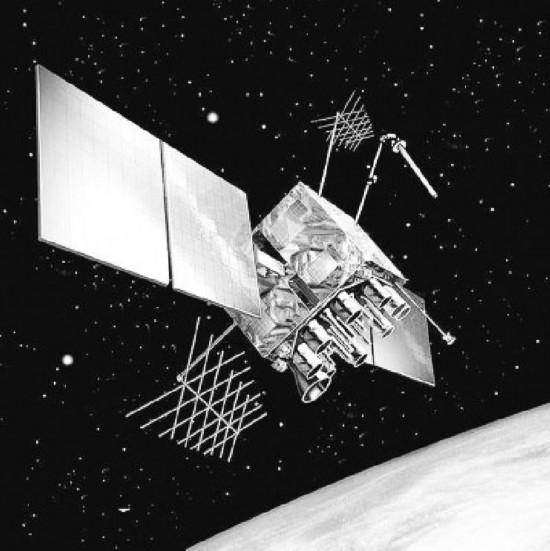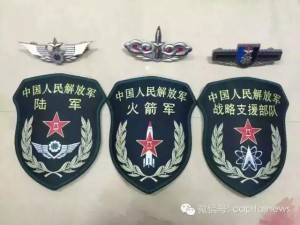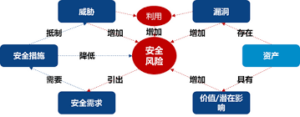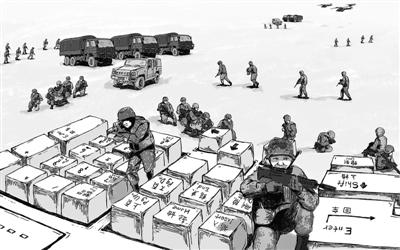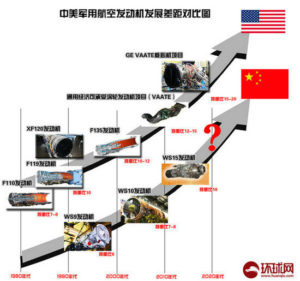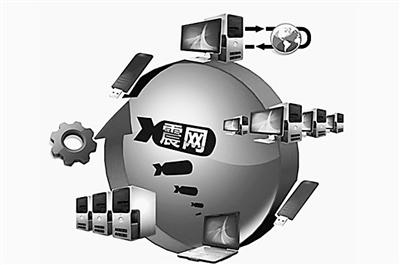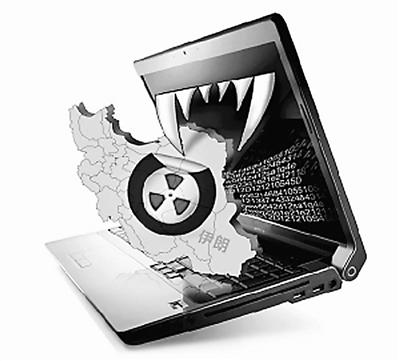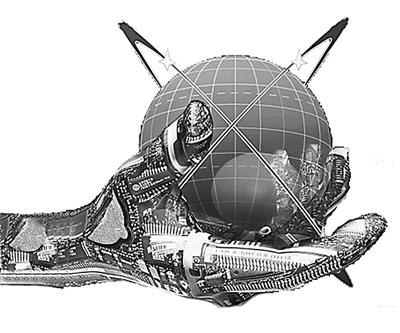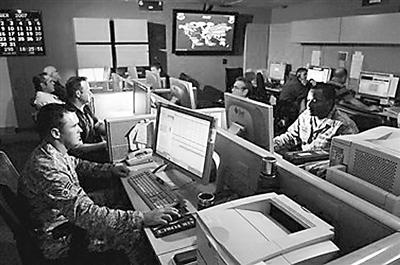Chinese Military Analysis of American Information Warfare Strategy Theory and Its Practical Conception //
中國對美國信息戰戰略理論的軍事分析及其實踐觀
By 胡 堅
From various news media, we can often read reports of hacking attacks on US information systems and computer networks, especially when the United States is arrogant and provocative in the world. . As a country with the most reliance on computers and information technology and the most popular application in the world, the vulnerability of the US information system and the vulnerability caused by its huge number are obvious. However, we must not forget that the United States is not only the only superpower in the world today, but also the number one information technology power. The importance of the United States to information warfare and the depth of research are unmatched by any country in the world. In addition to theoretical research, the United States has conducted several information warfare simulations and practical exercises of varying sizes. The US information war strategy is consistent with the starting point of its global military strategic thinking and is based on aggressiveness and expansion. While arguing and even exaggerating hackers pose a serious threat to its information infrastructure, on the other hand, the United States is quietly taking an active position in its information warfare in the future, and even launching large-scale information to other countries. Attack and make positive preparations. Therefore, people should not take it lightly and relax their vigilance. This article intends to briefly explain some important viewpoints of the United States on the strategic theory of information warfare for reference.
I. The United States’ definition of information warfare The
United States has been studying information warfare theory for a long time, and has published a large number of research literatures in this area, but the definition of information warfare has been constantly revised and improved. At the beginning of 1996, the Joint Chiefs of Staff of the United States gave an earlier definition of
information warfare : information warfare refers to the impact of capturing information superiority, the enemy information systems and computer networks, and the existing information systems and Facilities such as computer networks are protected and information is taken.
The above includes two aspects of attack and protection of the information infrastructure (NII). In October 1998, the Joint Chiefs of Staff made a perfection and supplement to the definition of information warfare in the newly promulgated “Information Warfare Common Dogma”. The most striking thing is that it is the first time in the form of government documents. The National Information Infrastructure (NII) is included in the scope of the information warfare. There are two main points: First, civilian facilities such as telephone, electric power and air traffic control systems will become the targets of information warfare attacks; second, the act of using any means to interfere with and destroy the enemy’s information decision-making process has been put into practice. .
The above definition shows that in order to achieve its strategic goals, the United States will not hesitate to destroy the vital infrastructure of a country as a means to force the other party to submit, in the process, it does not care about any loss that may be caused to civilians. With casualties. This was fully taught in the conflict that erupted in Kosovo from April to June 1999.
Second, the enemy
of information warfare The definition of the enemy of the information warfare in the United States is very complicated and ambiguous. The definition in the “Information Warfare Common Dogma” is as follows:
“The enemy of information warfare refers to the influence of my decision makers. Information threats and terrorist acts that are organized, premeditated and politically motivated or politically motivated. Hackers, individuals or organized criminals, internal apostates, industrial and economic agents who attack attacks on protected information systems and Terrorists are among the following.
From this definition, we can find that under certain circumstances, the United States can include foreign individuals or organizations, even a sovereign country, among its opponents of information warfare. Let us take an analogy: an energy company in a third world country negotiates with a US company and intends to purchase the electric equipment produced by the latter. Since the energy company’s information management system was purchased from the Netherlands and managed by Dutch engineering and technical personnel, these managers inadvertently learned about the transaction and reported the home country company, which led to the involvement of Dutch power equipment manufacturing companies. Competing with US companies ultimately led to major changes in the outcome of the deal. So the Dutch contender has in fact become a hostile party to the US information warfare.
Third, the strategic considerations of information warfare
The US information war strategy is one of the means of dismantling the enemy and forcing the opponent to obey the will of the United States and act according to the will of the United States. The explanation in the “Information Warfare Common Dogma” is as follows:
“In the peace year and the initial stage of the crisis, information warfare may be the best deterrent means to exert influence on the other party. Information warfare is to resolve the crisis and shorten the confrontation cycle. Enhancing the effectiveness of intelligence, diplomacy, economic and military means, and avoiding the use of mercenaries in conflict zones will play a major role.”
Please pay close attention to the “best deterrent measures in peace years…” In a word, this is a very threatening phrase because it shows that the United States can initiate an information attack from any country that it considers to be an opponent without declaring war. That is to say, in the form of a formal program document, the United States has unambiguously stated to the world that information warfare will be an effective tool for intervening in other countries’ internal affairs and interfering in other countries’ internal affairs during the years of peace.
US information warfare expert William Church From the above theory, several different types of conflicts or crises in the world that may occur in the future, information warfare is proposed to solve several hypothetical means:
one hypothetical: war territorial dispute triggered by
the first Second British, Ama Island War. The traditional war process is considered to be that Argentina once again sent troops and reclaimed the Malvinas Islands (Falkland Islands). The United Kingdom is convinced that Argentina is difficult to find international carriers because it does not have aircraft carriers and intercontinental ballistic missiles. Holding the island, the end of the war will still be the same as last time, with the British sending a powerful fleet to attack the island, Argentina defeated and summed, Britain won the return to the island.
But after considering the factors of information warfare, another situation may arise. Since information warfare will become an important weapon in future wars, Argentina can make full use of it to change its obvious weakness and counterattack Britain. And the final peace talks opportunity may also be created by the clever use of information warfare. In the war, the information warfare that Argentina can implement has the following aspects:
1. Obstructing each other’s war preparations: Through the means of information attacks, the British military’s communication systems and equipment are ineffective, destroying the British military’s personnel and equipment database, delaying the preparations for war in the UK, and increasing the huge expenditure for this. In the end, it may even force the British government to reconsider its ability and feasibility to take military action.
2. Psychological warfare changes the public opinion of the British public: psychological warfare can be varied, from spreading rumors to creating false news and stories that can dominate the entire paradox. The effect of using psychological warfare alone may not be ideal, but if combined with other means of information warfare, it can produce excellent results.
3. Creating a national information infrastructure crisis: If Argentina can launch an effective attack on the UK’s telecommunications, telephone, rail and air traffic control information infrastructure, it will be paralyzed or awkward. In this case, the British government wants to The determination to send troops to a war thousands of miles away will be difficult. In the half-month voyage of the aircraft carrier battle group to the destination, the voices and plans for seeking a peaceful solution that accompanied the domestic panic are likely to be brewing or negotiating.
4. Destroy the economic and financial means of maintaining war in the UK: weaknesses and shortcomings in the financial system can be exploited to create financial crises and panic. In 1998, there was an incident in the US stock market that caused the stock index to fall 200 points in just a few minutes due to computer program errors. The cause of the incident was that when a computer program reported the proceeds of several investment funds, the data was wrong due to incorrect programming. As a result, the stock price fluctuations of these funds caused a French businessman to be shocked and first hit. The order of immediately throwing the disk, the result triggered a panic that should not have occurred, causing the stock market to plummet, and many companies and shareholders suffered heavy losses. Information warfare experts believe that such defects can be replicated by means of information. It can attract the attention of the government and create a serious illusion of economic problems, thus affecting the government’s decision-making and financial support for war.
Hypothesis 2: Disagreements caused by economic dependence
Singapore is a city with a combination of international trading port, Far East financial center and Southeast Asian sea transportation center. It is economically developed and the people are rich, but it is a small country. The neighboring Malaysia is vast, but it is very poor and backward. Due to the small size of the country, Singapore’s air routes will pass through the southern part of Malaysia. This route is called the “air corridor” and it is a lifeline of Singapore. Although the two countries are both ASEAN countries, the relationship is still good, but there have been differences in how to use the “air corridor.” If one day Malaysia refuses to continue to use Singapore’s route through its airspace, the differences between the two countries may develop into a confrontation.
Information warfare can have many different ways of expression in this dispute. The most noticeable thing is that Singapore refused to provide advanced air traffic control services to Malaysia to pressure Malaysia to surrender and was forced to sit down and negotiate to solve the problem. And disputes. Because there is no binding clause in international law for such retaliation, once such incidents occur, it will surely attract strong attention from the international community.
The illusion of three:
a typical example of military confrontation and nuclear competition is the nuclear race and long-term military confrontation between India and Pakistan. Information weapons are likely to play a key role in resolving and eliminating this growing competition. The use of advanced electromagnetic pulse weapons, or the use of hacker infiltration methods to smash the nuclear weapons control information system and destroy the database of research data, can shake the nuclear weapons research programs of these two countries. This approach can also be extended to attack and destroy all important manufacturing, production and test equipment.
The illusion of the fourth: to change the attitude of a country from the eradication of the economy
In the information war, do not underestimate the impact of the National Information Infrastructure (NII) attack, it can give attackers an ideal opportunity to manipulate the economic situation of the other side. The direct result is that it can force hostile countries to greatly reduce their military spending, turn their financial resources to restore the economy, or force hostile countries to move from confrontation to easing.
Let us use an imaginary information attack example to illustrate its great destructiveness: A country confronts with B. During this period, State A found that B has an important water conservancy project (such as the river dam) and the national economy and people’s livelihood. It is closely related, so the country took the means of information attack, invaded and took over the monitoring and management system of the dam, and by changing the water storage capacity of the dam reservoir, it achieved the purpose of significantly changing the climate dry humidity in a certain area of B; Further, if State A puts a virus or destructive code in the dam’s control system, the reservoir’s control and regulation system suddenly fails at critical moments (such as the flood season), and as a result, the reservoir is lost due to flooding. The role of flooding, causing serious natural disasters and economic losses, in the end, the original economic advantages of the country B completely lost, under the pressure of internal and external, the country B had to succumb to the country.
The illusion of the fifth: the use of information weapons to obtain the same effect of using weapons of mass destruction in information warfare research, a problem that US information warfare experts are very interested in is: using information attacks, can create similar pearls of the year The massive damage effect of the Hong Kong incident? The conclusion is that, in theory, this possibility is completely present and necessary in hostile action, because it can greatly weaken the other’s ability to respond, resulting in the same possible military cost. effect. However, to achieve this, it is impossible to achieve without careful planning and sufficient resources to support and support. The US research program in this area is highly classified and unknown to outsiders.
The US military strategy theory believes that a country’s infrastructure can be greatly weakened by exerting a long-lasting military strike against it. But the ultimate goal of this is to clear the obstacles for the peace talks and force the other party to accept harsh conditions for peace talks. To this end, not only detailed and thorough target strike plans and multiple simulation rehearsals for attack plans, but also contingency measures in case of retaliatory counterattacks, as well as a complete command and logistics support system, etc., are required. Wait. NATO’s humanitarian signage and the brutal invasion of the Federal Republic of Yugoslavia are an actual rehearsal of this theory.
four. The traditional strategic defense priority theory faces severe challenges
In the spring of 1998, American military experts Stephen Van Evra and Charles L. Glazer published the “Attack, Defence, and War Causes” in the American Journal of International Security, Vol. 22, No. 4. “The concept of “attack and defense balance point and its measurement” and many other articles, that during the Cold War after World War II, it belongs to the era of strategic defense theory. At that time, the confrontational East and West sides were evenly matched and indifferent to each other in terms of the quantity and quality of their own conventional weapons and nuclear weapons. They always tried to avoid direct conflicts and confrontation. The main concern of both sides at the time was the balance and constraints of each other.
But nowadays, due to the emergence of a new war mode—-the emergence of information warfare, it is possible to use information attacks to directly attack the infrastructure of a country. Especially in information warfare, the cost of the attacker is far less than that of the defender. Therefore, some military experts in the United States believe that the old strategic theory must be revised to meet the needs of the new situation. In addition, they also stressed that implementation of the new strategic theory, depends on three factors simultaneously:
· On the basis of a strong military machine as a backup and security, and gradually reduce the investment in traditional military equipment;
· globalization The neoliberal trend of thought and the appreciation and acceptance of global market mechanisms;
• The dependence of developed and developing countries on information infrastructure is growing. The heart of speculation can be seen here.
American military critic Lawrence Friedman made a profound understanding and elaboration of the above-mentioned theory among American military personnel: “Western countries (the United States and NATO) have never considered the ultimate in developing military capabilities. The way of thinking has developed to such a dangerous point: if the military strength cannot reach the full overwhelming tendency of the enemy and the enemy has no power to fight, it cannot be regarded as qualified; the purpose of military action is to follow the set. The plan creates a very favorable negotiating position for one’s own side. Therefore, this time (the introduction of the new strategic theory), it is also necessary to take the lead in the comprehensive consideration of various factors.”
Original Mandarin Chinese:
從各種新聞媒體上,我們經常可以讀到美國的信息系統和計算機網絡遭到黑客攻擊的報導,特別是當美國在世界上蠻橫霸道、挑起事端時,這種攻擊就愈發激烈。作為世界上對計算機和信息技術依賴最重、應用最普及的一個國家,美國信息系統的易受攻擊性和由其龐大數量所帶來的脆弱性,是顯而易見的。但是,我們不要忘了,美國不僅是當今世界上唯一的超級大國,而且也是頭號信息技術強國,美國對信息戰的重視程度和研究的深度,是世界上任何一個國家都無法比擬的。除理論研究外,美國還進行過多次規模不等的信息戰模擬和實戰演習。美國的信息戰戰略,與其全球軍事戰略思想的出發點一致,也是建立在攻擊性和擴張性基礎上的。在大肆宣揚甚至誇張黑客對其信息基礎設施構成了嚴重威脅的同時,另一方面,美國卻在不聲不響地為其未來在信息戰戰爭中佔據主動地位、乃至向他國發動大規模的信息攻擊,進行著積極的準備。因此,人們切不可以掉以輕心,放鬆警惕。本文擬對美國在信息戰戰略理論上的一些重要觀點做一簡要的闡述,以供參考。
一、美國對信息戰的定義
美國對信息戰理論的研究由來已久,並發布過大量這方面的研究文獻,但對信息戰的定義卻一直在不斷地修改和完善之中。 1996年初,美國參謀長聯席會議曾給信息戰下過一個較早的定義:
信息戰是指為奪取信息優勢,對敵方信息系統與計算機網絡等設施施加影響,並對已方的信息系統和計算機網絡等設施進行保護,所採取的信息行動。
上述的內容包括對信息基礎設施(NII)的攻擊與防護兩個方面。 1998年10月,參謀長聯席會議在最新頒布的《信息戰共同教條》中,又對信息戰的定義做了完善和補充,其中最引人注目的,就是它首次以政府文件的形式,把國家信息基礎設施(NII)列入了信息戰打擊的對象範圍之內。其要點有二:一是民用設施如電話、電力與空中交通管制系統等,將會成為信息戰攻擊的目標;二是把用任何手段干擾和破壞敵方信息決策過程的行為,付諸了條文。
上述定義說明,為了實現自己的戰略目標,美國將不惜以摧毀一個國家生死攸關的基礎設施為手段,來達到迫使對方就範的目的,而在此過程中,它並不在乎可能給平民帶來的任何損失與傷亡。 1999年4-6月在科索沃爆發的衝突中,人們就充分領教了這一點。
二、信息戰的敵方
美國對於信息戰敵對一方的定義,是十分複雜而又含混的,在《信息戰共同教條》中的定義如下:
“信息戰的敵方,是指影響我決策者的有組織、有預謀並帶有政治目的或受政治動機所激發的信息威脅與恐怖行為。對受保護的信息系統發動攻擊的黑客、個人或有組織的罪犯、內部變節者、工業和經濟間諜及恐怖主義分子,均屬此列。”
從該定義中我們可以發現,在特定情況下,美國可以把國外的個人或組織、甚至某個主權國家,都納入其信息戰的對手之列。我們不妨來打一個比方:某個第三世界國家的能源公司與美國某企業進行商談,打算購買後者生產的電力設備。由於該能源公司的信息管理系統購自荷蘭,且受荷蘭工程技術人員管理,這些管理人員在無意中知悉了這一交易,並報告了母國公司,結果使荷蘭的電力設備製造公司也介入進來,與美國公司開展競爭,最終使這筆交易的結果發生了很大的變化。於是荷蘭的這個競爭者,事實上就成了美國信息戰的敵對一方。
三、信息戰的戰略考慮
美國的信息戰戰略,是把它作為瓦解敵方,強制對手順從美國的意願,按美國的意志行事的手段之一。在《信息戰共同教條》中的闡述如下:
“在和平年月以及危機爆發的最初階段,信息戰有可能是對對方施加影響的最好的威懾手段。信息戰對於化解危機、縮短對抗週期,增強情報、外交、經濟與軍事手段的效能,盡量避免在衝突地區採用僱傭軍等,都將發揮重大的作用。”
請仔細注意上文中“在和平年月……的最好的威懾手段”這一段話,這是非常具有威脅性的辭句,因為它表明美國可以從自身的利益出發,在不宣戰的情況下向任何一個它認為是對手的國家發起信息攻擊。也就是說,美國以正式的綱領文件的形式,向世人明白無誤地聲明了信息戰將是它在和平年月時介入別國內部事務、干涉別國內政的一個有效的工具。
美國信息戰專家威廉·丘奇從上述理論出發,對未來世界上可能發生的幾種不同類型的衝突或危機,提出了幾種假想的信息戰解決手段:
假想之一:領土爭端引發的戰爭
第二次英、阿馬島戰爭。傳統的戰爭進程考慮是,阿根廷再次出兵,收回了馬爾維納斯群島(福克蘭群島),英國確信阿根廷由於沒有航空母艦和洲際彈道導彈,以及難以尋求到國際上的實質性援助,所以很難守住馬島,因此戰爭的結局仍會同上次一樣,以英國派出強大的艦隊向馬島發起進攻,阿根廷戰敗求和,英國奪回馬島而告終。
但是考慮信息戰的因素後,就可能出現另外的情況,由於信息戰在未來戰爭中必將成為一個重要的武器,阿根廷可以充分利用它來改變自己的明顯弱勢,反擊英國。並且最終的和談機會,也可能由對信息戰的巧妙運用而營造出來。在戰爭中,阿根廷可以實施的信息戰手段有以下幾個方面:
1.阻礙對方的戰爭準備:通過信息攻擊手段,使英國軍方的通信系統和設備喪失效能,破壞英軍的人員和裝備數據庫,遲緩英國的戰爭準備,並使其為此增加巨大的開支。最終,甚至可能迫使英國政府重新考慮它採取軍事行動的能力和可行性。
2.以心理戰改變英國公眾的輿論向背:心理戰的方式可以有多種多樣,從散佈各種謠言,到製造能夠主導整個輿論向背的虛假新聞和故事等等,不一而足。單獨採用心理戰的手法效果可能不會很理想,但若是與信息戰的其他手段結合使用,則可以產生出色的效果。
3.製造國家信息基礎設施危機:如果阿根廷能對英國的電信、電話、鐵路與航空管制等信息基礎設施發起有效的攻擊,使其陷入癱瘓或半癱瘓,在這種情況下,英國政府要想出兵進行一場遠在幾千英里之外的戰爭,其決心將會是很難下的。在航空母艦戰鬥群開赴目的地的半個多月航程中,伴隨著國內恐慌而誕生的尋求和平解決的呼聲及方案,很可能就已經在醞釀或商談之中。
4.破壞英國維持戰爭的經濟和財源手段:金融體制上的弱點和缺陷,可以被利用來製造金融危機和恐慌。 1998年,美國股市曾發生一起因電腦程序錯誤導致在短短幾分鐘內股指狂跌200點的事件。事件的起因是,一個電腦程序在報告幾個投資基金的收益時,由於程序設計有誤使數據出錯,結果引起這幾個基金股價的波動,一位法國商人見狀大驚失色,首先打出“立即拋盤”的指令,結果引發了一場本來不該發生的恐慌,造成股市大跌,不少企業和股東損失慘重。信息戰專家認為,這種缺陷是可以利用信息手段進行複制的,它可以吸引政府的注意力,造成一種經濟問題嚴重的假象,從而影響政府對戰爭的決策與財力支持。
假想之二:經濟依存關係導致的分歧
新加坡是一個集國際貿易港、遠東金融中心、東南亞海上交通中心於一身的城市國家,經濟發達、人民富裕,但卻是個彈丸小國;而毗鄰的馬來西亞國土遼闊,但卻十分貧困和落後。由於國土很小,新加坡的空中航線要穿過馬來西亞的南部地區,這段航線被叫做“空中走廊”,它是新加坡的一條生命線。兩國雖同屬東盟國家,關係尚好,但在如何使用“空中走廊”上一直存在分歧。如果有一天馬來西亞拒絕新加坡繼續使用穿越其領空的這條航線,兩國之間的分歧就可能會發展成為一種對抗。
信息戰在這場糾紛中可以有很多不同的表現方式,而最能引起人們注意的,就是新加坡以拒絕向馬來西亞提供先進的空中交通管制服務,來壓馬來西亞屈服,最終被迫坐下來談判解決問題和糾紛。因為國際法中沒有對這種報復行為的約束條款,一旦這類事件發生,必將引起國際社會強烈的注意。
假象之三:軍事對峙與核競賽
這方面的典型例子是印度、巴基斯坦的核競賽與長期軍事對峙。而信息武器在化解和消弭這場愈演愈烈的對抗賽中,有可能發揮關鍵的作用。利用先進的電磁脈衝武器,或者採取黑客滲透的方法來癱瘓雙方核武器的控制信息系統、破壞其存放研究資料的數據庫,可以動搖這兩個國家的核武器研究計劃。這種方法還能夠擴大到對所有重要的製造、生產與試驗設備進行攻擊和破壞。
假象之四:從搞垮經濟入手轉變一個國家的態度
在信息戰中,切不要小看對國家信息基礎設施(NII)的攻擊效果,它可以使攻擊者獲得一個理想的操縱對方經濟形勢的機會,其直接的結果,就是能夠迫使敵對國大大減少其軍事開支、將財力轉向恢復經濟,或者使敵對國被迫從對抗走向緩和。
讓我們用一個假象的信息攻擊的例子,來說明它的巨大破壞性:甲國與乙國發生對抗,在此期間,甲國發現乙國有一個重要的水利工程(如攔河大壩)與國計民生息息相關,於是甲國採取信息攻擊的手段,入侵並接管了這個大壩的監控管理系統,並通過改變大壩水庫蓄水量的做法,達到了明顯改變乙國某地區氣候乾濕度的目的;更進一步,如果甲國在大壩的控制系統中安放了病毒或破壞性的代碼,使水庫的控制調節系統在關鍵時刻(如洪澇季節)突然失靈,結果在洪水來臨時水庫喪失了應有的調節作用,造成洪水氾濫,產生嚴重的自然災害和經濟損失,最終,乙國原有的經濟優勢完全喪失,在內外壓力下,乙國不得不屈服於甲國。
假象之五:用信息武器獲得採用大規模毀傷性武器得到的同樣效果在信息戰研究中,美國的信息戰專家們很感興趣的一個問題是:利用信息攻擊手段,能否創造出類似當年珍珠港事件那樣的大規模毀傷效果?結論是,從理論上講,這種可能性是完全存在的,而且在敵對行動中非常必要,因為它能夠大大削弱對方的應變能力,從而產生要花極大的軍事代價才有可能得到的同樣效果。但是,要想做到這一點,沒有周密的計劃和足夠的資源配合與支持,是不可能實現的。美國在這方面的研究計劃被列入高度機密,外人無從知曉。
美國的軍事戰略理論認為,一個國家的基礎設施,可以通過對其施以長時間持續不斷的軍事打擊,來予以大大削弱。但這樣做的最終目的,是為和談掃清障礙,迫使對方接受苛刻的和談條件。為此,不但需要詳細而又周密的目標打擊計劃和針對攻擊行動方案的多次模擬預演,還要製定在遭到對方報復性反擊情況下的應變措施,以及完善的指揮與後勤保障系統,等等。北約打著人道主義招牌,對南聯盟實施的野蠻入侵行為,就是對這一理論的一次實際預演。
四.傳統的戰略防禦優先理論面臨嚴峻的挑戰
1998年春,美國軍事專家斯蒂芬·範·埃弗拉與查爾斯·L·格拉澤等人,在美國出版的刊物《國際安全》第22卷第4期上,發表了“進攻,防禦與戰爭的起因”、“攻防平衡點的概念及其度量”等多篇文章,認為二戰後的冷戰期間,屬於戰略防禦理論優先的時代。那時,對峙的東、西雙方在各自擁有的常規武器和核武器的數量與質量上,勢均力敵、難分伯仲,彼此都忌憚三分,因此總是力求避免爆發直接的衝突和對抗。當時雙方關注的主要問題,是相互的平衡與製約。
但是如今,由於新的戰爭模式—-信息戰的出現,使利用信息攻擊手段直接打擊一個國家的基礎設施成為了可能,尤其是在信息戰中,進攻方的代價要遠遠小於防禦方,因此美國的一些軍事專家們認為,必須修改舊的戰略理論,以適應新的形勢發展的需要。此外,他們還強調新的戰略理論的實施,有賴於以下三個因素的同步進行:
·在有強大軍事機器作為後盾和保障的基礎上,逐步降低在傳統軍事裝備上的投資;
·對全球化的新自由主義思潮,以及全球市場機制採取讚賞和接受的態度;
·發達國家和發展中國家對信息基礎設施的依賴越來越大。叵測之心,於此可窺一斑。
美國軍事評論家勞倫斯·弗里德曼,對美國軍方人士中的上述理論,作了深刻的認識和闡述:“西方國家(美國和北約)在發展軍事能力上,是永遠沒有終極考慮的。其思想方式已經發展到瞭如此危險的地步:軍事實力若不能達到對敵呈完全壓倒之勢、使敵方毫無招架之力,則不能算做合格;軍事行動的目的,就是要按照即定的計劃,為己方製造出一個極為有利的談判地位。因此這一次(新的戰略理論思想的提出),同樣是在綜合考慮各種因素的前提下,要想把先機佔盡。”
Original Referring url: http://old.globalview.cn/








